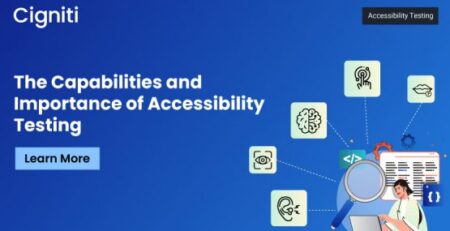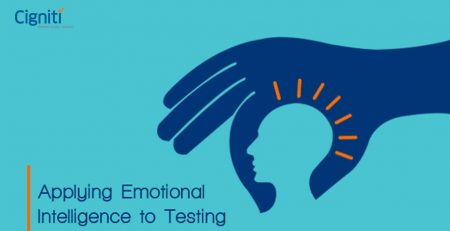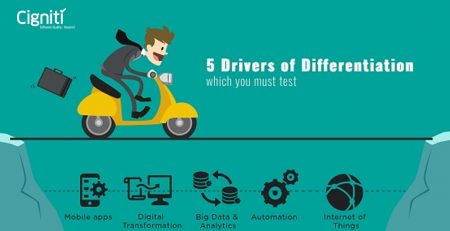Why You Should Know the Risks Your Clients Face
|
Listen on the go!
|
Risk – Fact Vs Perception
The future is, and always will be, uncertain! A risk simply implies future uncertainty about aberrations from expected outcomes. It is simply not a perception anymore. It is a researched, calculated, and predicted fact, which helps organizations manage their own, and in turn, their client’s risks as well.
Why You Should Know the Risks Your Clients Face
Service organizations are not only required to understand their clients’ business type, expected levels of satisfaction, technology and environmental challenges, but also their risk profile. It has become vital these days to determine client risk classification in accordance with their regulations. Performing this additional step of knowing clients through their risk classification gives service organizations the required edge, and helps to know their clients better.
Knowing the business that the Client deals with helps immensely while completing your work for the Client. It leads to asking the right questions and evaluating how reasonable the answers given seem to be. This helps while approximating the principles, processes, and policies of the client. It is also important so as to identify the unexpected deviations that could be encountered later in the business process.
Knowledge of the business of the client and the industry in which it operates, is necessary to the development of a strong relationship and aids in understanding the management’s philosophy and aspirations for the business. Understanding the business strategy and plans can lead to providing relevant and practical business advice to the client. It also helps massively in identifying areas in which the client might benefit from other professional services which we may be able to provide.
Key Risks that Organizations across the world are facing:
According to the 2017 Global Risks Report, most organizations across the globe are in the midst of dealing with 4 key risks – Environmental, Socio-economic, Technological, and Cooperative.
- Environmental – Risks related to the Environment dominate the 2017 global risk landscape, in terms of probability and the impact with extreme weather events, large natural disasters, as well as failure of mitigation and adaptation to climate change, as the most prominent global risks.
- Socio Economic – Some of the common risks in a socio-economic situation includes rising income inequality, and the polarization of our society along ethnic, religious, and cultural lines. The social protection systems have suffered from a “perfect storm” of threats, such as financial crises, underfunded systems across the world, aging population, mass migration, etc. This has resulted in increased cost and risks for individuals, which may hamper individual and business growth. This creates a need to have a solution. The solution must not only address these rapid changes, but also should be interconnected and collaborative between businesses, individuals, and the governing bodies.
- Technological – These are common across the business and technological sectors. A few important ones:
- Design vulnerabilities
- Unforeseen incidents
- Cyber-attacks
- Risks related to security
- Availability
- Integrity
Furthermore, disruption to labor markets may intensify, as jobs seen traditionally as falling under the “skilled labor” category are being replaced by machines/robots. This calls in for thinking on the lines of innovative solutions and transformation to deal with challenging conditions.
- Cooperative – There’s going to be very little left with the organizations when it will come to managing some or more of the risks mentioned above, owing to an increasingly interconnected world. This creates the necessity for an effective collaboration between different countries, business sectors and societies to manage the risks. For companies, responding to global risks will require a truly holistic risk management approach taking inter-dependencies between risks into account.
The Know Your customer – Risk (KYC-R) Approach
Considering the above risks and the ones’ which are still underlying, unsearched, and unpredicted, it is more important for a service organization to have a defined approach to deal with such risks which might as well be termed as ‘disruptive’ in nature.
KYC-R approach helps in formulation of key strategies using techniques such as SWOT Analysis, risk workshops, surveys, and analysis of existing risks, scenario and regulatory analysis. This is usually a collaborative approach which aligns towards the key principles and guidelines of ISO 31000 – Risk Management.
Using ISO 31000 can benefit organizations by allowing them to increase the likelihood of achieving objectives, improve the identification of opportunities and threats, and effectively allocate and use resources for risk treatment. This provides the services organizations a common approach of identifying and dealing with key risks of clients. Clients in turn are assured of not only a great service (as the service provider is well aware of their own risks) but also a great value which goes beyond the normal delivery approach and takes into account the key risks that matter to the business of the clients.
Practicing this approach provides significant benefits, a few of which have been discussed below:
- Becoming proactive than reactive thus improving operational efficiency and governance
- Gain client trust as each client gets a uniquely designed service offering
- Alignment to recognized standard helps better risk analysis and minimize losses
- Protect the business from rapidly changing dynamics
In Conclusion
By adopting KYC-R approach service organizations are empowered to identify real risks underneath the complex business environment. At Cigniti, risk experts help analyze this approach by understanding the unique risk picture that every client depicts. Cigniti has offered services and solutions to a wide range of industries including aerospace, construction, environmental, government, healthcare, information technology, manufacturing, pharmaceuticals, professional services, telecommunication, transportation and utilities. For details, contact us.
References
- Four key areas for global risks in 2017 – https://www.weforum.org/agenda/2017/01/global-risks-in-2017/




Leave a Reply